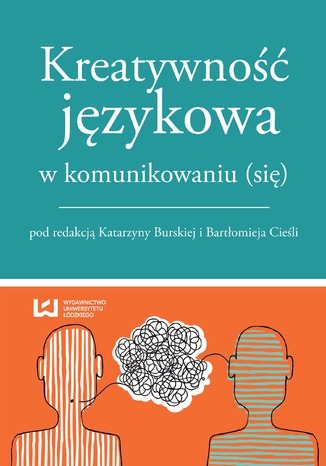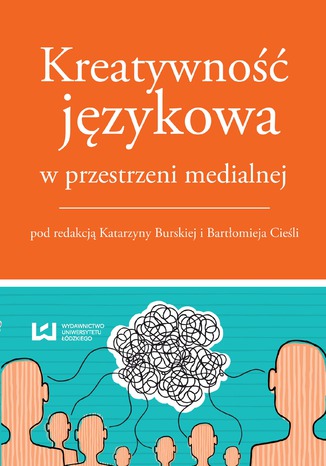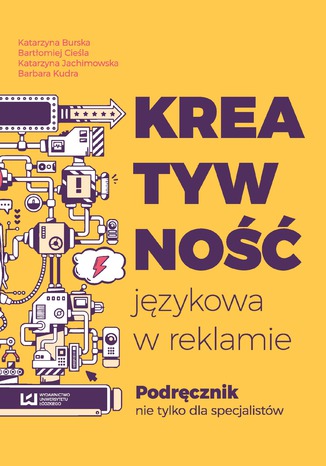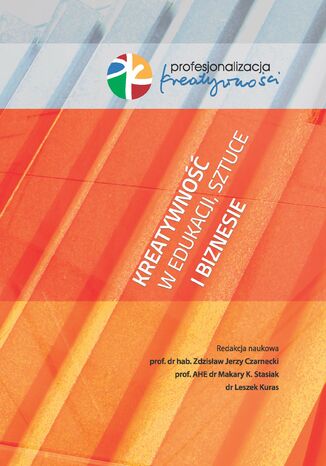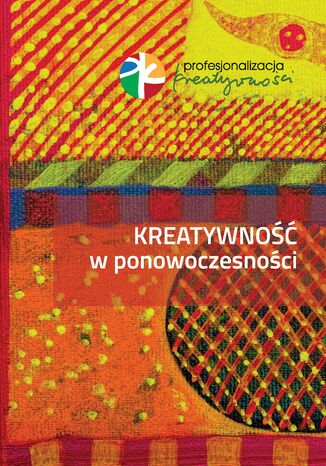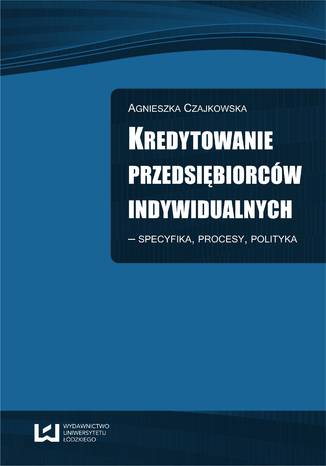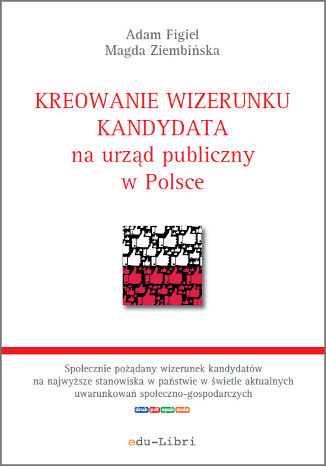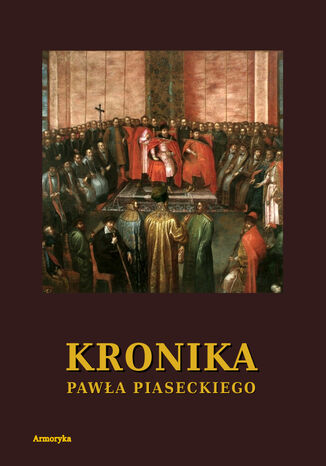Categories
-
- Bitcoin
- Businesswoman
- Coaching
- Controlling
- E-business
- Economy
- Finances
- Stocks and investments
- Personal competence
- Computer in the office
- Communication and negotiation
- Small company
- Marketing
- Motivation
- Multimedia trainings
- Real estate
- Persuasion and NLP
- Taxes
- Social policy
- Guides
- Presentations
- Leadership
- Public Relation
- Reports, analyses
- Secret
- Social Media
- Sales
- Start-up
- Your career
- Management
- Project management
- Human Resources
-
- Architektura i wnętrza
- Health and Safety
- Biznes i Ekonomia
- Home and garden
- E-business
- Ekonomia i finanse
- Esoterecism
- Finances
- Personal finance
- Business
- Photography
- Computer science
- HR & Payroll
- For women
- Computers, Excel
- Accounts
- Culture and literature
- Scientific and academic
- Environmental protection
- Opinion-forming
- Education
- Taxes
- Travelling
- Psychology
- Religion
- Agriculture
- Book and press market
- Transport and Spedition
- Healthand beauty
-
- Office applications
- Data bases
- Bioinformatics
- IT business
- CAD/CAM
- Digital Lifestyle
- DTP
- Electronics
- Digital photography
- Computer graphics
- Games
- Hacking
- Hardware
- IT w ekonomii
- Scientific software package
- School textbooks
- Computer basics
- Programming
- Mobile programming
- Internet servers
- Computer networks
- Start-up
- Operational systems
- Artificial intelligence
- Technology for children
- Webmastering
-
- Antology
- Ballade
- Biographies and autobiographies
- For adults
- Dramas
- Diaries, memoirs, letters
- Epic, epopee
- Essay
- Fantasy and science fiction
- Feuilletons
- Work of fiction
- Humour and satire
- Other
- Classical
- Crime fiction
- Non-fiction
- Fiction
- Mity i legendy
- Nobelists
- Novellas
- Moral
- Okultyzm i magia
- Short stories
- Memoirs
- Travelling
- Narrative poetry
- Poetry
- Politics
- Popular science
- Novel
- Historical novel
- Prose
- Adventure
- Journalism, publicism
- Reportage novels
- Romans i literatura obyczajowa
- Sensational
- Thriller, Horror
- Interviews and memoirs
-
- Archeology
- Bibliotekoznawstwo
- Cinema studies
- Philology
- Polish philology
- Philosophy
- Finanse i bankowość
- Geography
- Economy
- Trade. World economy
- History and archeology
- History of art and architecture
- Cultural studies
- Linguistics
- Literary studies
- Logistics
- Maths
- Medicine
- Humanities
- Pedagogy
- Educational aids
- Popular science
- Other
- Psychology
- Sociology
- Theatre studies
- Theology
- Economic theories and teachings
- Transport i spedycja
- Physical education
- Zarządzanie i marketing
-
- Health and Safety
- History
- Road Code. Driving license
- Law studies
- Healthcare
- General. Compendium of knowledge
- Academic textbooks
- Other
- Construction and local law
- Civil law
- Financial law
- Economic law
- Economic and trade law
- Criminal law
- Criminal law. Criminal offenses. Criminology
- International law
- International law
- Health care law
- Educational law
- Tax law
- Labor and social security law
- Public, constitutional and administrative law
- Family and Guardianship Code
- agricultural law
- Social law, labour law
- European Union law
- Industry
- Agricultural and environmental
- Dictionaries and encyclopedia
- Public procurement
- Management
-
- Africa
- Albums
- Southern America
- North and Central America
- Australia, New Zealand, Oceania
- Austria
- Asia
- Balkans
- Middle East
- Bulgary
- China
- Croatia
- The Czech Republic
- Denmark
- Egipt
- Estonia
- Europe
- France
- Mountains
- Greece
- Spain
- Holand
- Iceland
- Lithuania
- Latvia
- Mapy, Plany miast, Atlasy
- Mini travel guides
- Germany
- Norway
- Active travelling
- Poland
- Portugal
- Other
- Przewodniki po hotelach i restauracjach
- Russia
- Romania
- Slovakia
- Slovenia
- Switzerland
- Sweden
- World
- Turkey
- Ukraine
- Hungary
- Great Britain
- Italy
-
- Philosophy of life
- Kompetencje psychospołeczne
- Interpersonal communication
- Mindfulness
- General
- Persuasion and NLP
- Academic psychology
- Psychology of soul and mind
- Work psychology
- Relacje i związki
- Parenting and children psychology
- Problem solving
- Intellectual growth
- Secret
- Sexapeal
- Seduction
- Appearance and image
- Philosophy of life
-
- Bitcoin
- Businesswoman
- Coaching
- Controlling
- E-business
- Economy
- Finances
- Stocks and investments
- Personal competence
- Communication and negotiation
- Small company
- Marketing
- Motivation
- Real estate
- Persuasion and NLP
- Taxes
- Social policy
- Guides
- Presentations
- Leadership
- Public Relation
- Secret
- Social Media
- Sales
- Start-up
- Your career
- Management
- Project management
- Human Resources
-
- Antology
- Ballade
- Biographies and autobiographies
- For adults
- Dramas
- Diaries, memoirs, letters
- Epic, epopee
- Essay
- Fantasy and science fiction
- Feuilletons
- Work of fiction
- Humour and satire
- Other
- Classical
- Crime fiction
- Non-fiction
- Fiction
- Mity i legendy
- Nobelists
- Novellas
- Moral
- Okultyzm i magia
- Short stories
- Memoirs
- Travelling
- Poetry
- Politics
- Popular science
- Novel
- Historical novel
- Prose
- Adventure
- Journalism, publicism
- Reportage novels
- Romans i literatura obyczajowa
- Sensational
- Thriller, Horror
- Interviews and memoirs
-
- Philosophy of life
- Interpersonal communication
- Mindfulness
- General
- Persuasion and NLP
- Academic psychology
- Psychology of soul and mind
- Work psychology
- Relacje i związki
- Parenting and children psychology
- Problem solving
- Intellectual growth
- Secret
- Sexapeal
- Seduction
- Appearance and image
- Philosophy of life
- Ebooks
- Education
Education
Kreatywność językowa w komunikowaniu (się)
Bartłomiej Cieśla, Katarzyna Burska
W publikacji pokazano różne sposoby twórczego wykorzystania języka w literaturze, sztuce i edukacji. Młodzi adepci językoznawstwa, kulturoznawstwa, literaturoznawstwa, dziennikarstwa i filozofii dzielą się spostrzeżeniami na temat kreacyjnych możliwości tkwiących zarówno w samym języku, jak i jego użytkownikach. Zebrane artykuły dotyczą atrakcyjnych zabiegów słownych i słowno-wizualnych wykorzystywanych we współczesnej komunikacji. Poruszone zostały zagadnienia kreatywności genologicznej, innowacji w przekładach i oryginalności słownej w rozmaitych odmianach polszczyzny. Analizy licznych przekazów służące systematyzacji i pogłębieniu wiedzy w szerokim obszarze wskazanych problemów uzupełnione są o teoretyczne rozważania nad komunikacją, kreatywnością językową i sposobami jej rozwijania. Książka adresowana jest nie tylko do humanistów zajmujących się opisem komunikatów językowych, ale też do wszystkich osób, które chciałyby popracować nad własnymi umiejętnościami pisarskimi i rozwijać kompetencje językowe.
Kreatywność językowa w przestrzeni medialnej
Bartłomiej Cieśla, Katarzyna Burska
Zbiór jest poświęcony różnym sposobom twórczego wykorzystania języka w mediach masowych, reklamie, marketingu i nazewnictwie, w szczególności kreatywności dziennikarskiej (cz. I), internetowi widzianemu jako przestrzeń kreatywna (cz. II), kreatywności w marketingu, reklamie i nazewnictwie (cz. III) oraz komizmowi językowemu. Na ciekawą nie tylko dla humanistów publikację składają się teksty dotyczące najnowszych zjawisk językowych, analizowanych przez młodych adeptów językoznawstwa, kulturoznawstwa, medioznawstwa, dziennikarstwa i filozofii. Dzielą się oni spostrzeżeniami na temat kreacyjnych możliwości tkwiących zarówno w języku, jak i w jego użytkownikach. Znajdziemy tu m.in.: omówienie języka współczesnych dziennikarzy w sieci; analizę wykorzystania nazw własnych do modyfikacji frazemów w nagłówkach prasy sportowej oraz języka relacji sportowych i kreatywnego stosowania modyfikacji związków frazeologicznych i nawiązań intertekstualnych w nagłówkach prasowych; opis mody językowej na Facebooku (nadużywane wyrazy i tematy); ukazanie relacji między słowem a obrazem; językowych i pozajęzykowych aspektów komunikacji przedstawicieli Pokolenia Y w Internecie na przykładzie serwisu Facebook; memów traktowanych jak współczesne plotki językowe i analizowanych pod kątem kreatywności; ujęcie demotywatorów i memów jako połączenia słowa i obrazu; próbę rozstrzygnięcia, czy istnieje przepis na dobrą nazwę marketingową; analizę nazwa polskich tanich win owocowych lub mechanizmów tworzenia nazw programów publicystycznych; ujęcie argumentacji jako środka perswazji − na przykładzie prasowych tekstów reklamowych; pokazanie stylizacji jako sposobu budowania komizmu językowego, zamierzonej niepoprawność językowej jako źródła komizmu, a także przegląd sposobów budowania komizmu językowego w wybranych filmach Juliusza Machulskiego. Publikacja może zainteresować nie tylko humanistów zajmujących się opisem komunikatów językowych, lecz także te osoby, które chcą rozwijać umiejętności pisarskie i kompetencje językowe.
Kreatywność językowa w reklamie. Podręcznik nie tylko dla specjalistów
Katarzyna Burska, Bartłomiej Cieśla, Katarzyna Jachimowska, Barbara Kudra
Publikacja to podręcznik z zakresu kreatywności językowej w reklamie. Autorzy w przystępny, syntetyczny sposób prezentują techniki językowe wykorzystywane w reklamie w celu osiągnięcia lepszego efektu sprzedażowego. Przy każdej omawianej technice Czytelnik znajdzie liczne przykłady twórczego wykorzystania środków językowych, w tym również przykłady wizualne. Po kolejnych rozdziałach umieszczono zestawy ćwiczeń służące kształtowaniu umiejętności twórczego stosowania języka w reklamie. Podręcznik zawierający bogaty materiał ilustracyjny oraz niebanalne, rozwijające ćwiczenia z pewnością będzie przydatny w pracy ze studentami kierunków humanistycznych (językoznawstwa, dziennikarstwa, komunikacji społecznej, kulturoznawstwa) oraz marketingu i zarządzania. Zainteresuje też praktyków związanych ze światem reklamy: copywriterów, pracowników firm reklamowych i wszystkich zajmujących się kreatywnym tworzeniem reklam oraz przemysłem z tym związanym.
Kreatywność w edukacji, sztuce i biznesie
Czarnecki Z.J., Stasiak M.K., Kuras L. (red.)
Autorzy i redaktorzy tomu wyrażają głębokie przekonanie, że konferencja "Profesjonalizacja kreatywności" jest jedną z najistotniejszych inicjatyw naukowych prezentujących badania nad ideą kreatywności oraz konkretne projekty kreatywne, realizowane w rozmaitych środowiskach: edukacyjnym, biznesowym, artystycznym itd. Jednocześnie mamy nadzieję, że oryginalna publikacja, która w całości poświęcona jest identyfikowaniu idei kreatywności i jej przejawów w życiu społecznym i gospodarczym, będzie inspiracją, zestawem wskazań i pojęć służących pogłębianiu refleksji badawczej nad zjawiskiem twórczych postaw człowieka oraz będzie pomagała w inicjowaniu projektów kreatywnych. Książka powinna stać się inspiracją dla przedstawicieli różnych środowisk, między innymi: edukacji, biznesu, kultury, samorządu. Mamy nadzieję, że publikacja zainicjuje jednocześnie poszukiwanie odpowiedzi na pytania o proces, warunki i skutki profesjonalizacji kreatywności.
Karolak W., Stasiak M.K., Witerska K. (red.)
Dziś, w sytuacji, jaka zaistniała w XXI wieku, warto podjąć poważną dyskusję, na ile współczesny człowiek potrafi obiektywnie poznać i zrozumieć rzeczywistość, w jaki sposób powinien postępować, do czego powinien ostatecznie zmierzać. Nie są to łatwe pytania i zapewne nie ma na nie jednej, jednoznacznej odpowiedzi. Dlatego też z wielką radością przekazujemy w ręce czytelnika publikację będącą zbiorem tekstów ilustrujących różne wersje ponowoczesnego, a może już poponowoczesnego świata, w którym główną rolę gra kreatywność, kreatywność na co dzień, kreatywność w edukacji, rekreacji, sztuce i biznesie. [...] Mamy nadzieję, że niniejsza publikacja trafi do rąk osób, które, jeśli już nie są, to zostaną zarażone kreatywnością i potrzebą tworzenia, a wtedy ich świat zmieni się nie do poznania. Kto raz zasmakuje w tworzeniu i kreowaniu własnego świata, ten będzie tworzył zawsze i czerpał z procesu tworzenia przyjemność i ogromne korzyści.
Kredytowanie przedsiębiorców indywidualnych - Specyfika, procesy, polityka
Problematyka pracy dr Agnieszki Czajkowskiej jest bez wątpienia aktualna, ważna, a przy tym interesująca zarówno z poznawczego, jak i głównie praktycznego punktu widzenia. Autorka próbuje przeanalizować z różnych punktów widzenia problematykę kredytowania przedsiębiorców indywidualnych w kontekście doświadczenia banków oraz przedsiębiorców. Praca adresowana jest głównie do środowiska akademickiego, ale i do praktyków, przede wszystkim związanych z sektorem bankowo-finansowym.
Kreowanie wizerunku kandydata na urząd publiczny w Polsce
W opracowaniu zanalizowano zmiany opinii publicznej oraz jej wpływ na decyzje wyborcze elektoratu. Analiza obejmowała wybory parlamentarne i prezydenckie po roku 1989. Celem przyświecającym autorom było wykazanie, dzięki identyfikacji technik i narzędzi promocyjnych stosowanych w kampaniach wyborczych, że odpowiednio dobrana strategia budowania wizerunku, właściwa z punktu widzenia konkretnego kandydata i okoliczności, stanowi istotny czynnik sukcesu wyborczego. Zasadniczą część opracowania stanowi analiza procesu budowania wizerunku kandydatów podczas wyborów prezydenckich w 2015 roku ze względu na dużą różnorodność ubiegających się o to stanowisko i prezentowanych przez nich postaw.
Kronika Pawła Piaseckiego Biskupa Przemyskiego
UWAGA! e-book jest skanem zapisanym w formacie PDF. Plik pdf uniemożliwia przeszukiwanie i kopiowanie tekstu REPRINT. Paweł Piasecki herbu Janina, (1579-1649) sekretarz królewski Zygmunta III Wazy (ok. 1613-1627), archidiakon warszawski w latach 1616-1631, kanonik lubelski, opat komendatoryjny mogilski (1624-1649) i biskup kamieniecki (1627-1640), biskup chełmski (1640-1644), a następnie przemyski (1644-1649). Jego Kronika obejmuje okres od panowania Stefana Batorego po rok 1644. Zawiera wiele ważnych i cennych informacji. Obowiązkowa lektura dla każdego, kto pasjonuje się dziejami naszego narodu i państwa.

